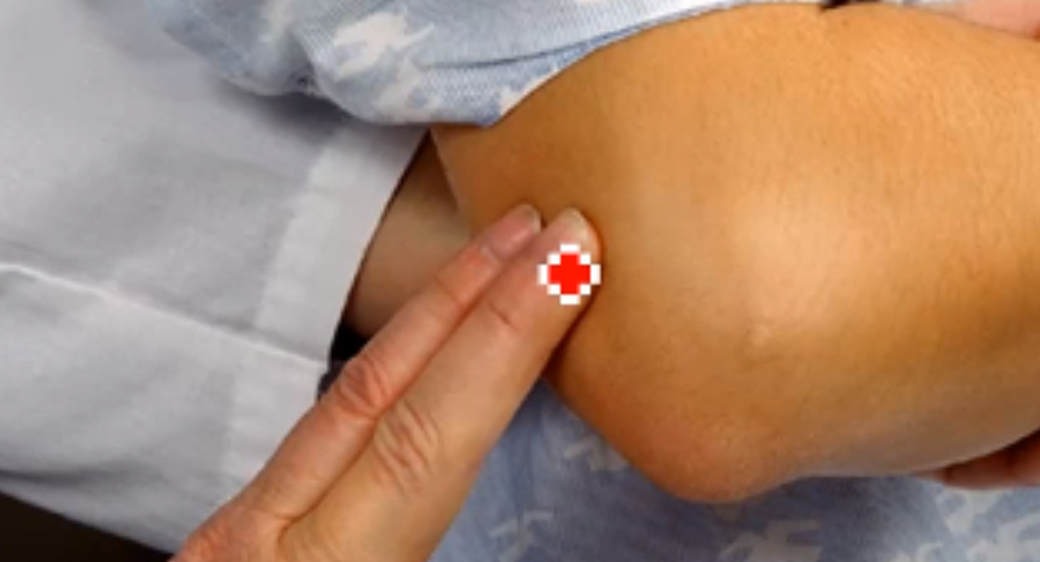Unit 5A.10: Breast Assessment | Breast, Chest & Lungs Assessment
1/82
There's no tags or description
Looks like no tags are added yet.
Name | Mastery | Learn | Test | Matching | Spaced |
|---|
No study sessions yet.
83 Terms
Estrogen & Progesterone
What hormones bring about enlargement of the female breasts during puberty?
Pectoralis Major
Identify the Anatomic Breast Landmark.
(1)
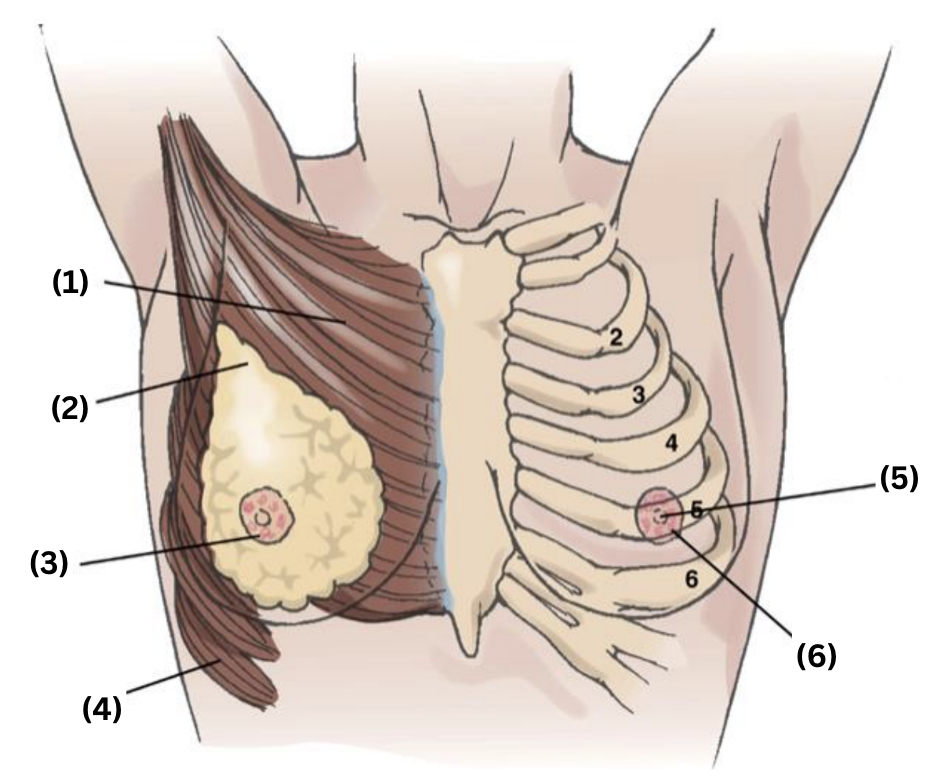
Axillary Tail of Spence
Identify the Anatomic Breast Landmark.
(2)
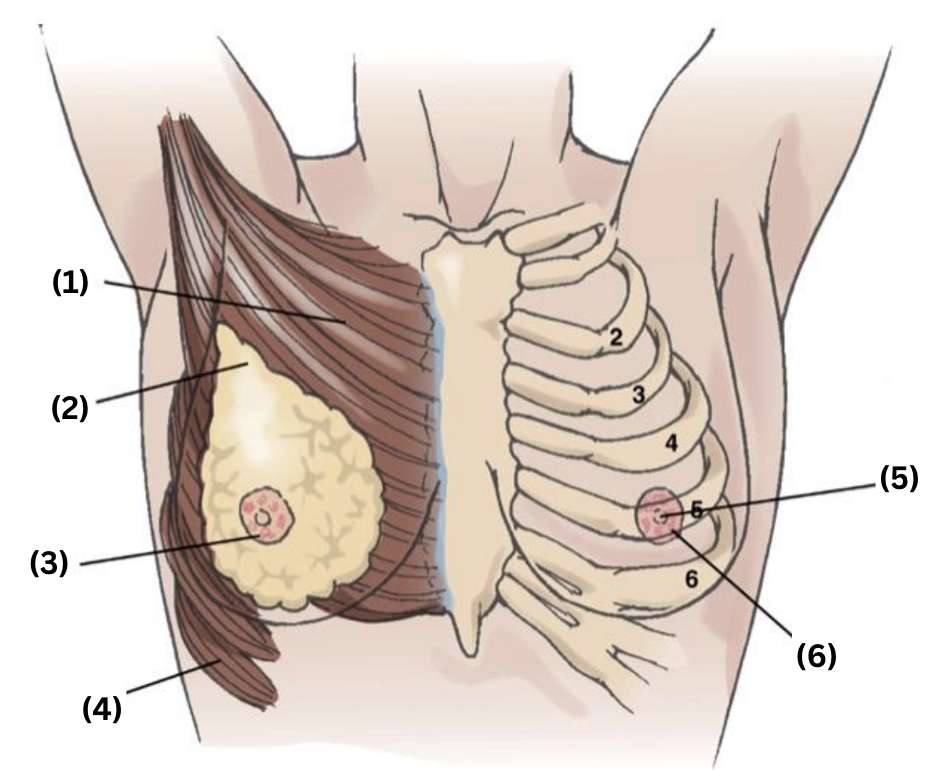
Areola
Identify the Anatomic Breast Landmark.
(3)
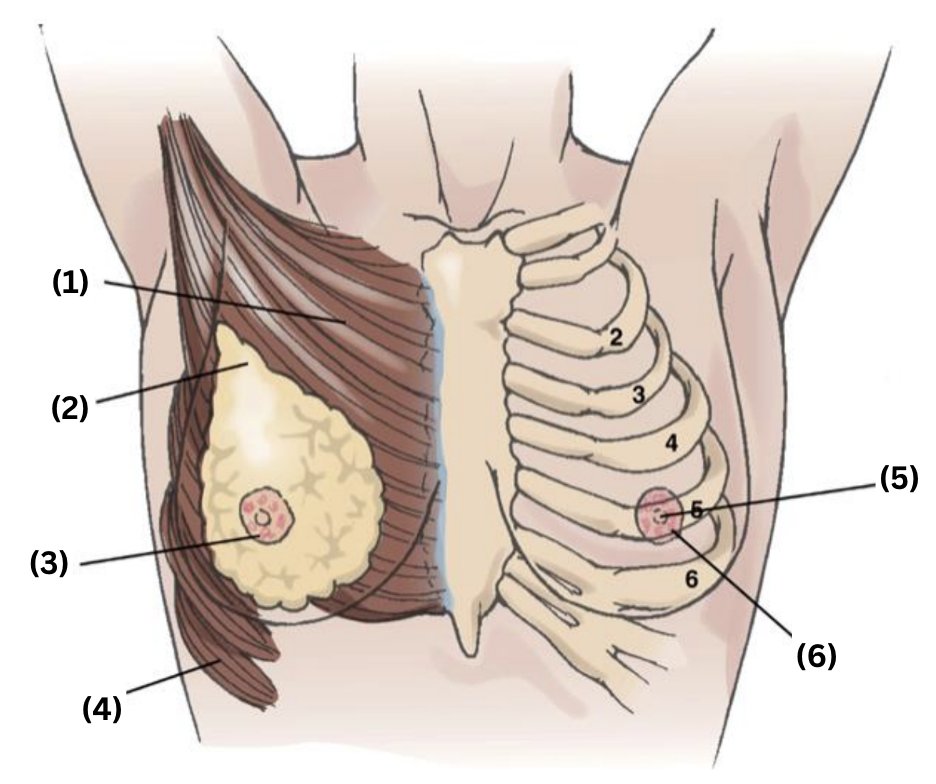
Serratus Anterior
Identify the Anatomic Breast Landmark.
(4)

Nipple
Identify the Anatomic Breast Landmark.
(5)
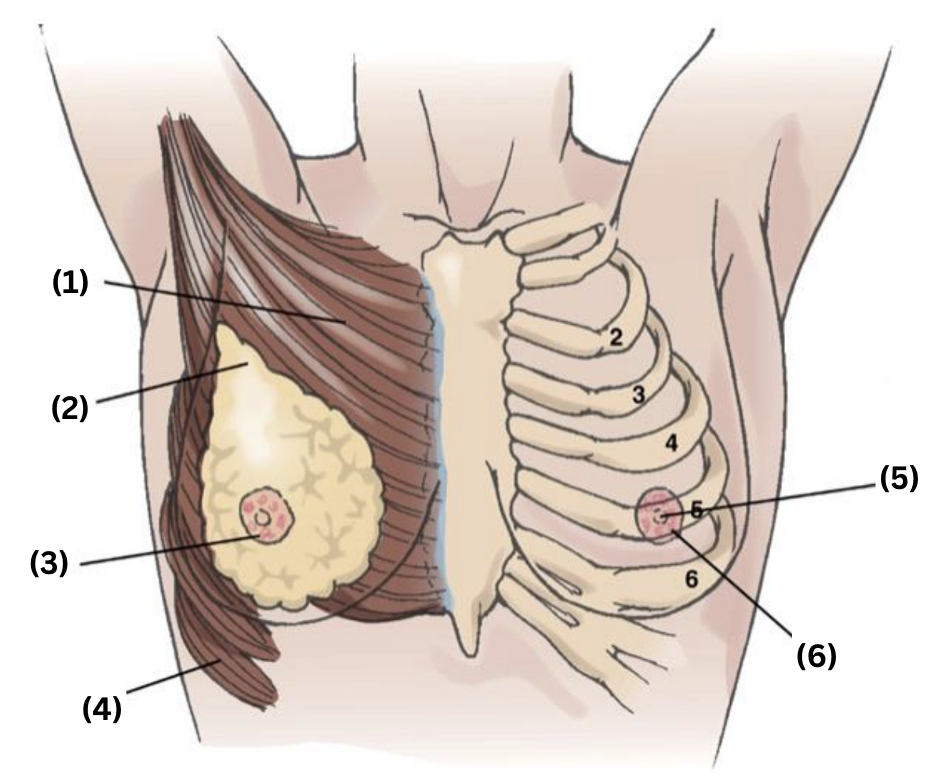
Montgomery’s Glands
Identify the Anatomic Breast Landmark.
(6)
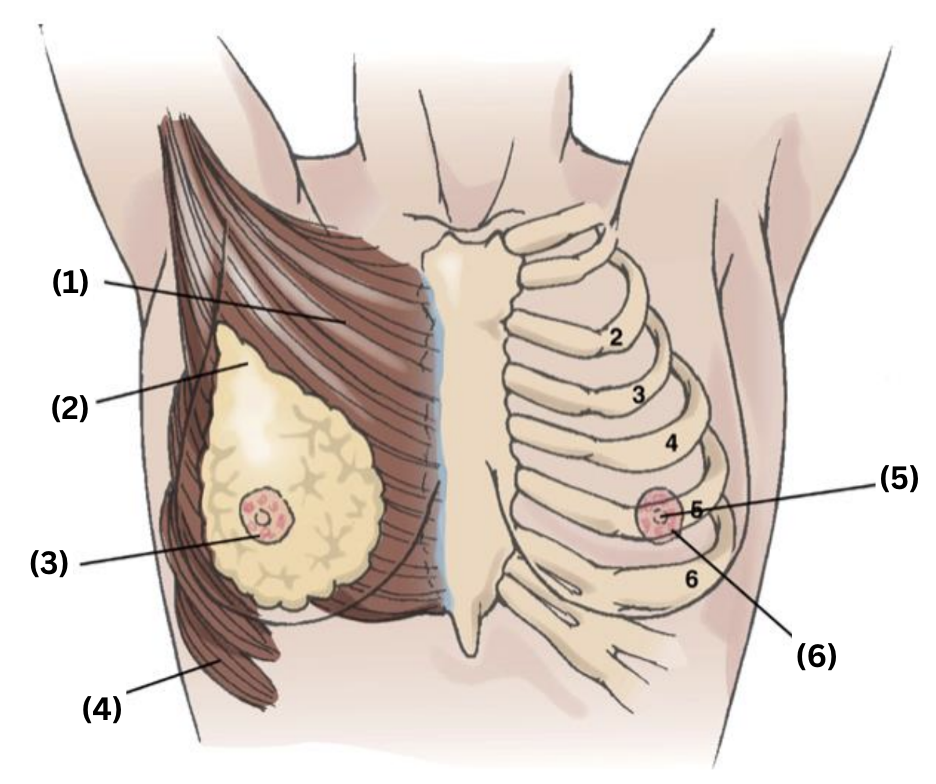
Upper Inner
Identify the component of the Breast Quadrants.
(1)
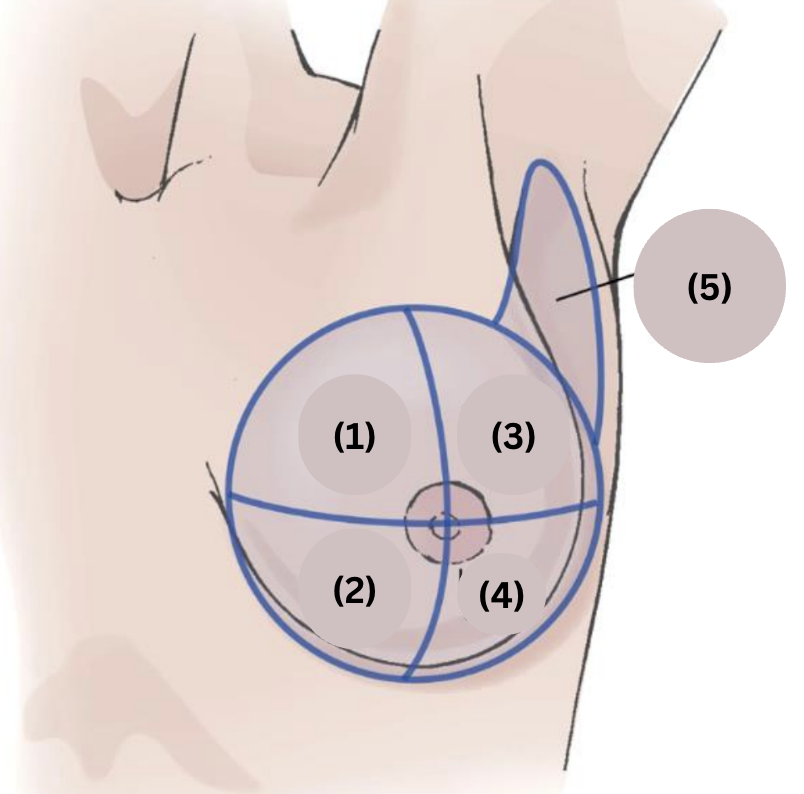
Lower Inner
Identify the component of the Breast Quadrants.
(2)
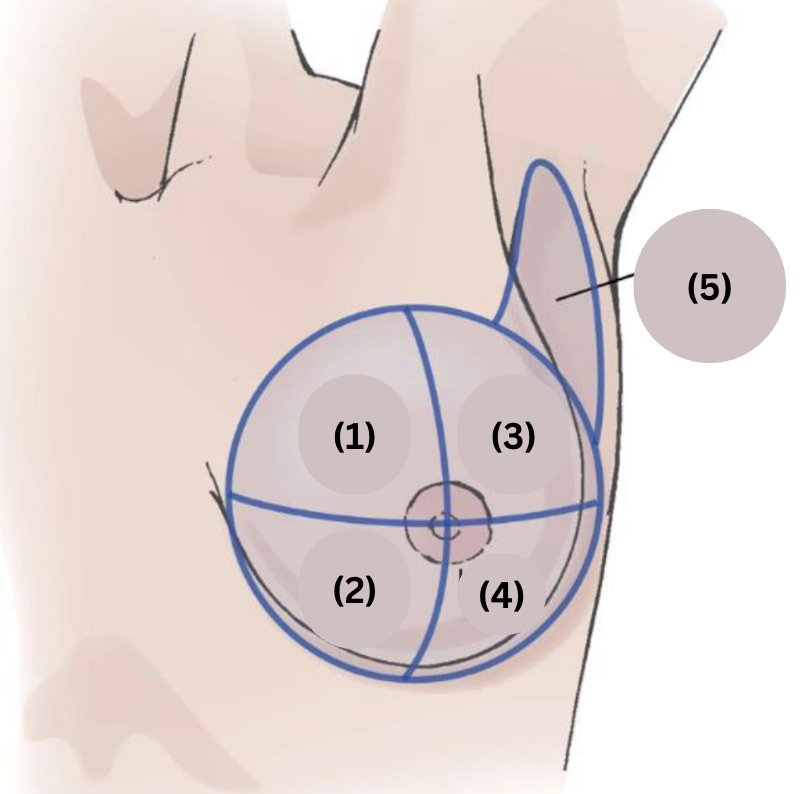
Upper Outer
Identify the component of the Breast Quadrants.
(3)
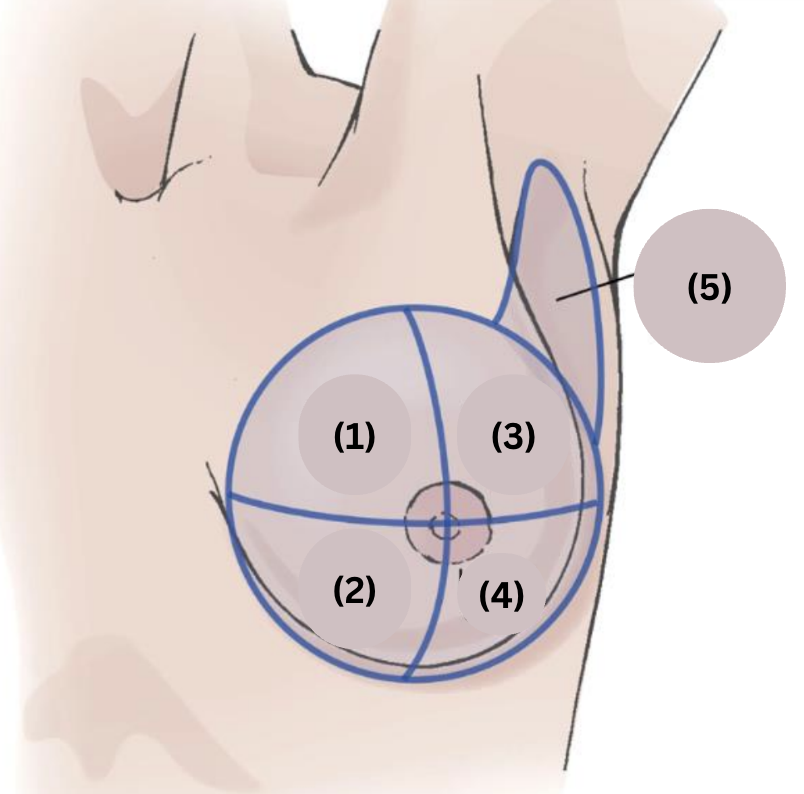
Lower Outer
Identify the component of the Breast Quadrants.
(4)
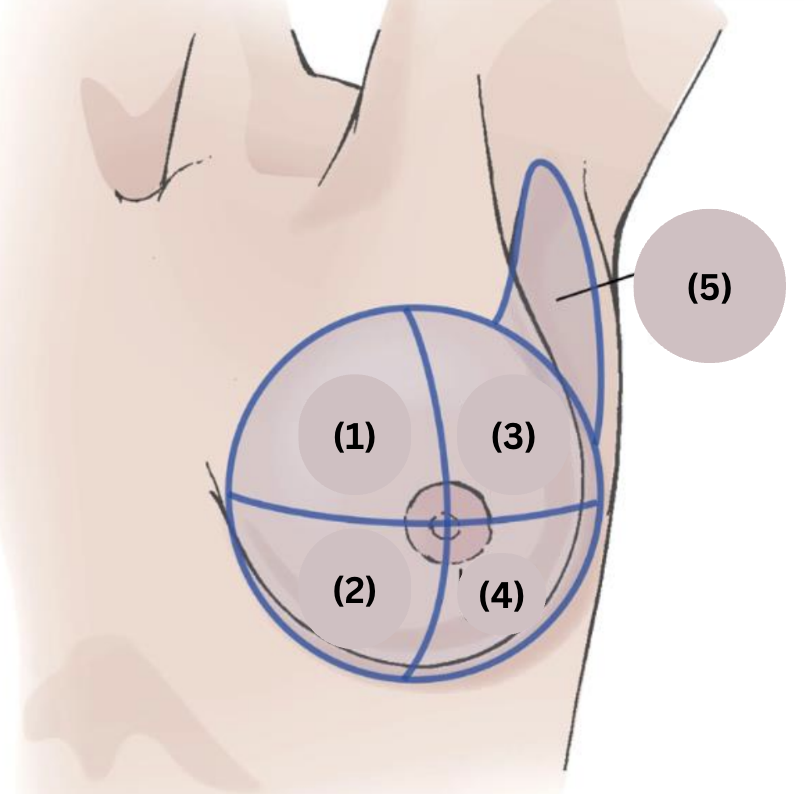
Axillary Tail of Spence
Identify the component of the Breast Quadrants.
(5)
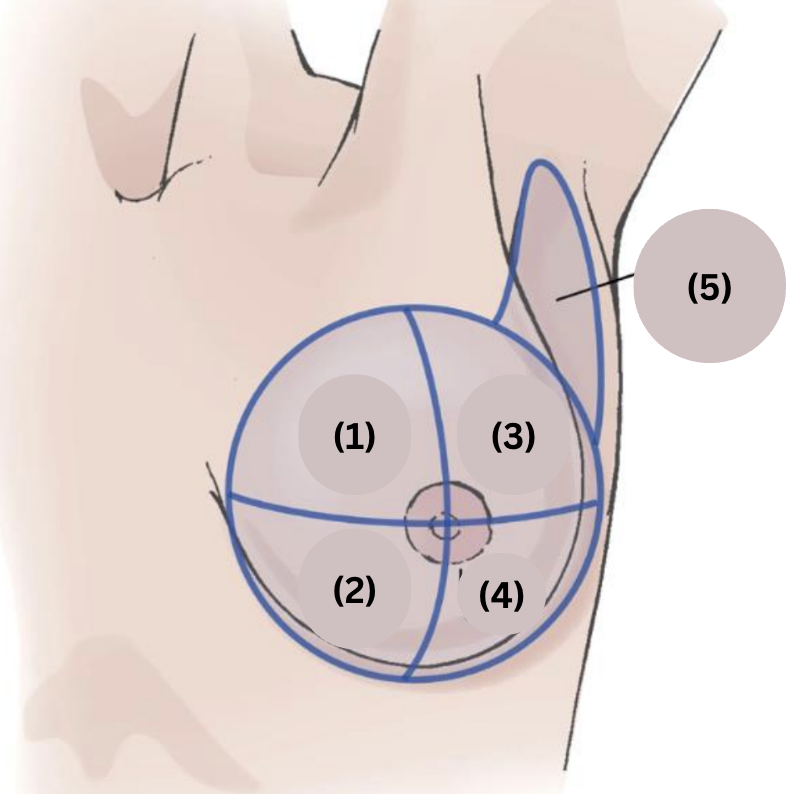
Pectoralis Major
Identify the component of the Internal Breast Anatomy.
(1)
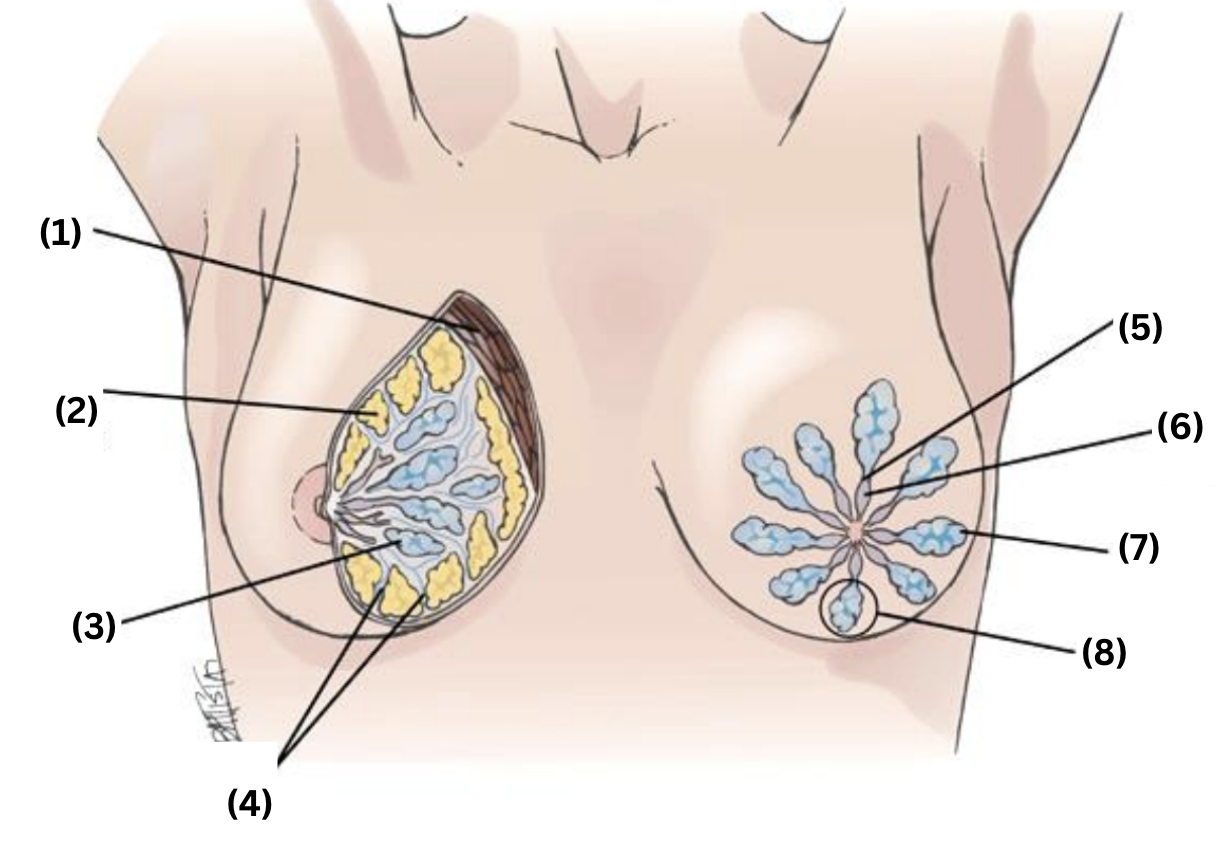
Fatty Tissue
Identify the component of the Internal Breast Anatomy.
(2)
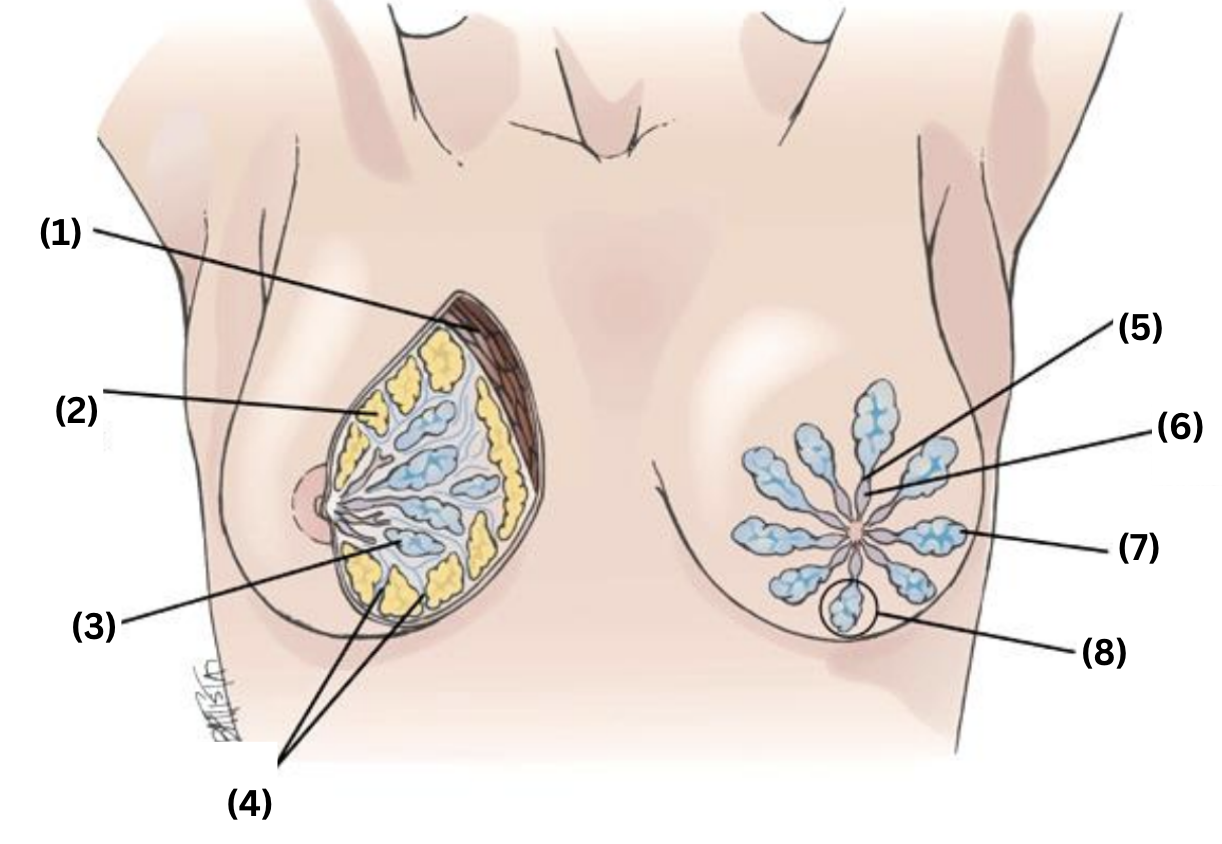
Glandular Tissue
Identify the component of the Internal Breast Anatomy.
(3)

Cooper’s Ligaments (Fibrous Tissue)
Identify the component of the Internal Breast Anatomy.
(4)
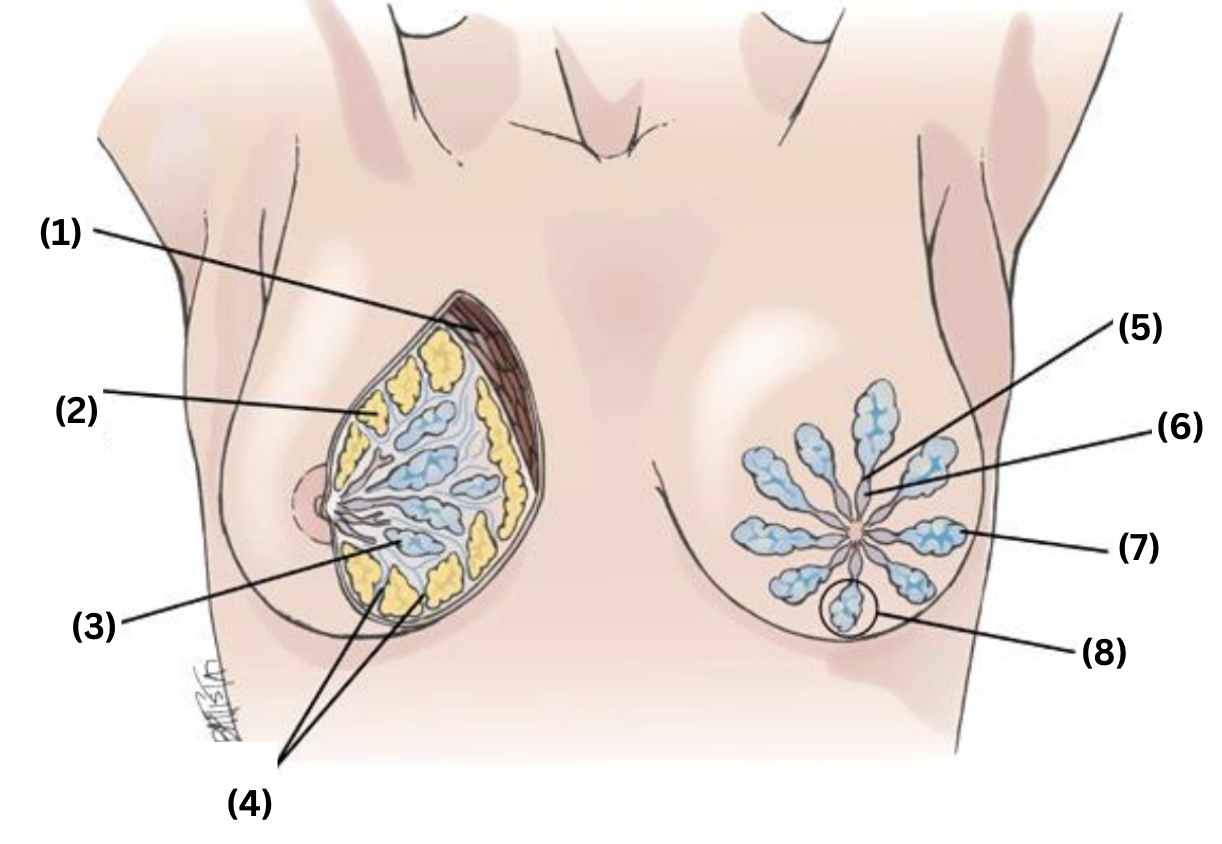
Lactiferous Duct
Identify the component of the Internal Breast Anatomy.
(5)
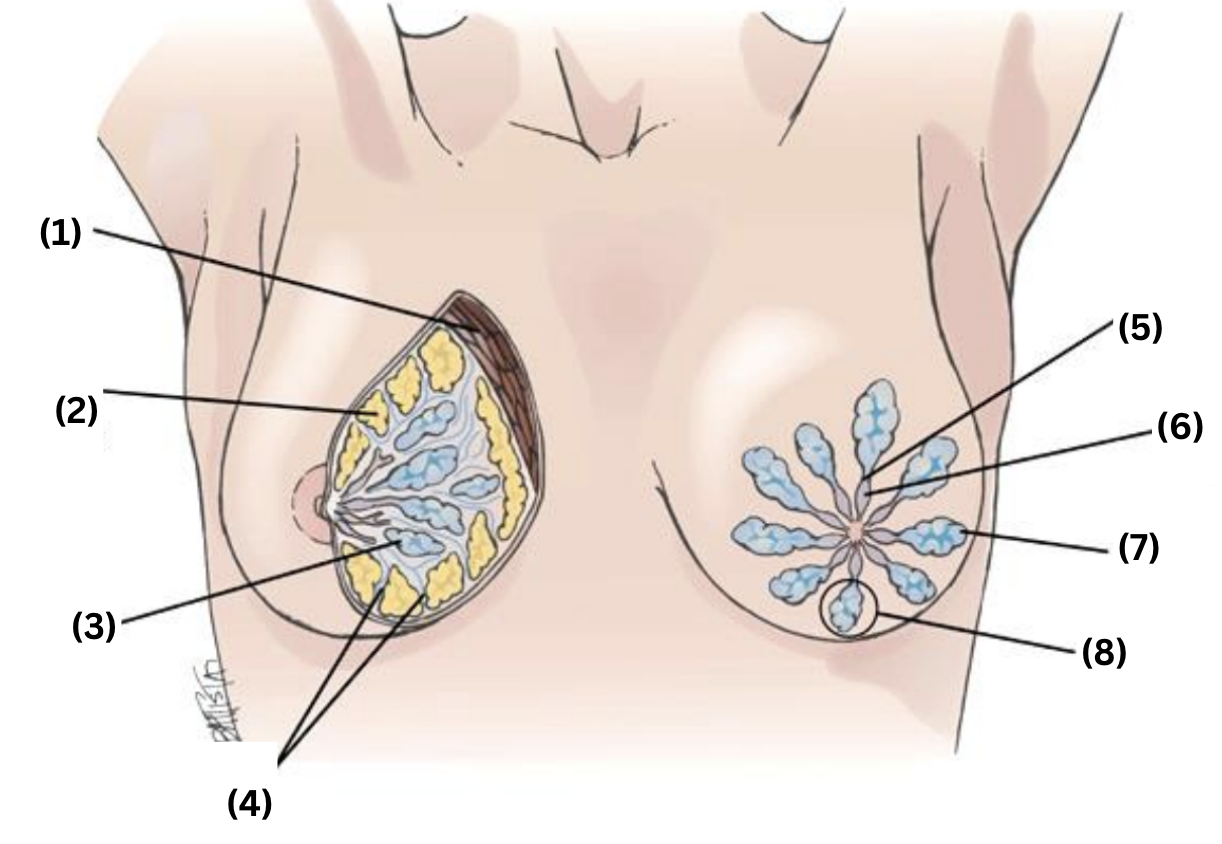
Lactiferous Sinus
Identify the component of the Internal Breast Anatomy.
(6)
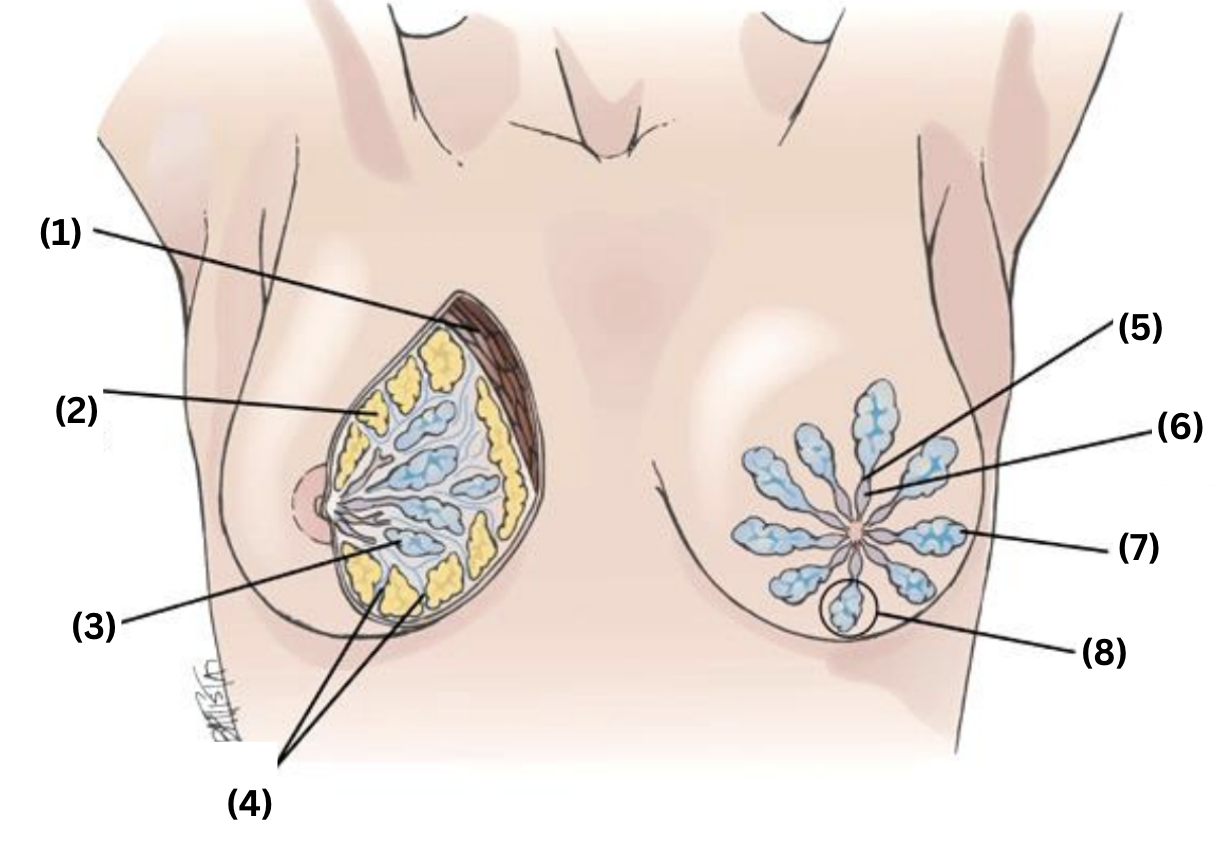
Lobule
Identify the component of the Internal Breast Anatomy.
(7)
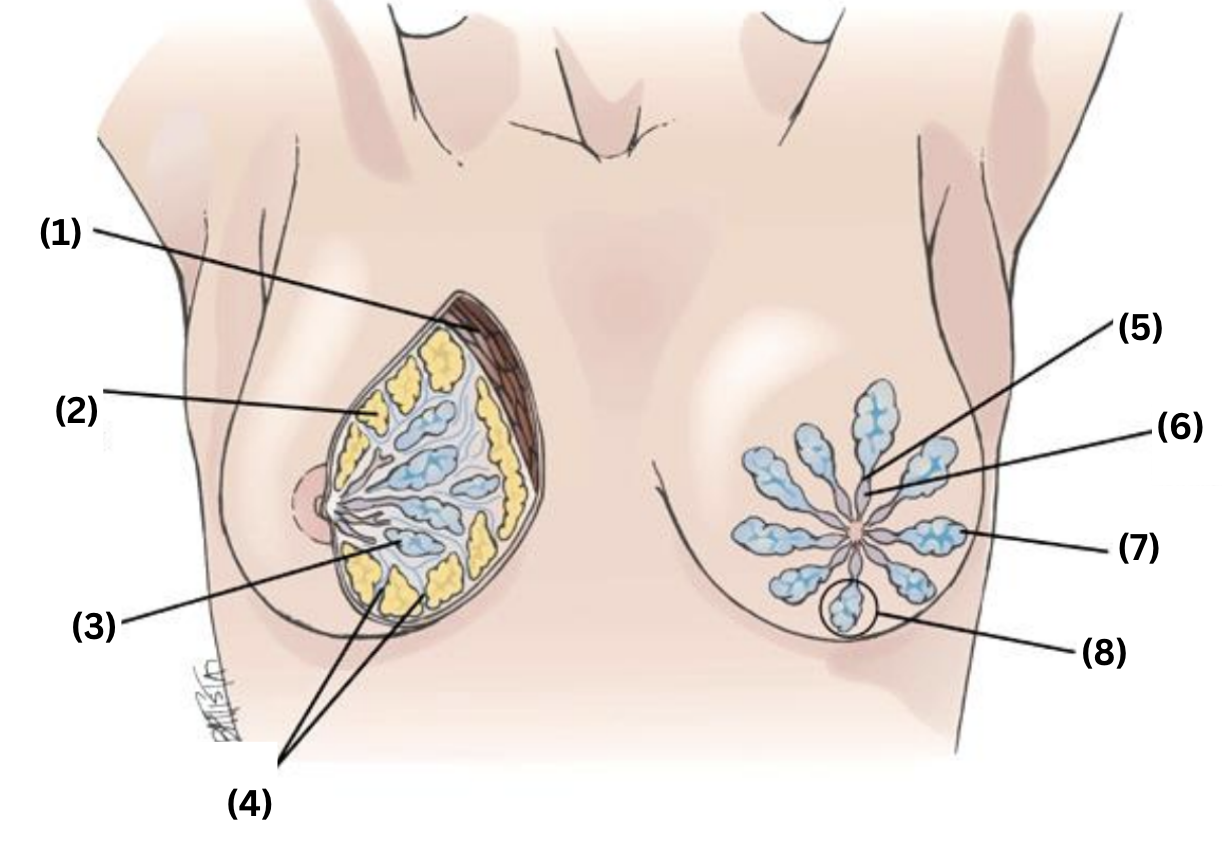
Lobe
Identify the component of the Internal Breast Anatomy.
(8)
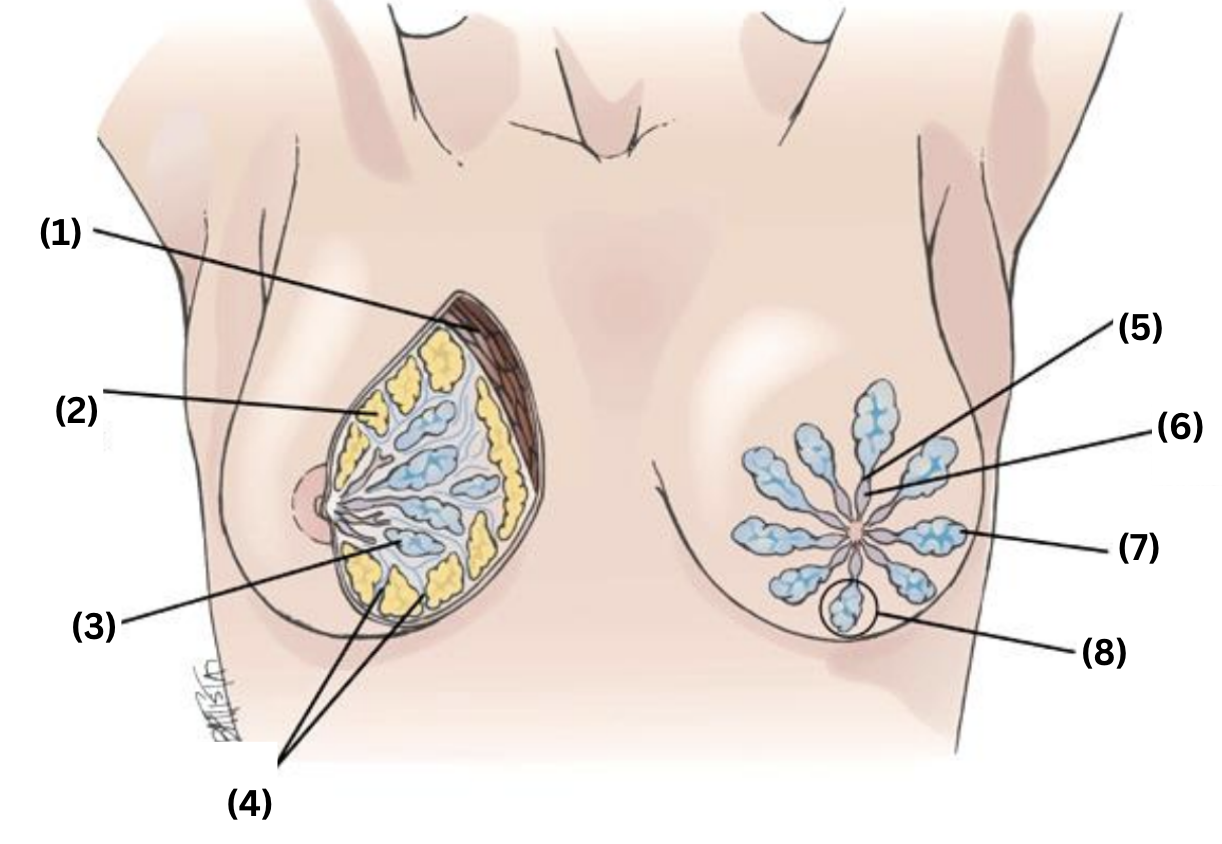
Round
Pendulous (hanging down loosely)
What is the normal shape of the breasts?
Inflammation or
Abnormal Growth
What does a recent increase in the size of one breast indicate?
Right breast slightly larger than the left
What is an example of the normal symmetry of the breasts?
Color varies based on client’s skin tone
Texture is smooth, with no edema
What is the normal color and texture of the breast?
Linear stretch marks
What may be seen on the breasts during and after pregnancy or with significant weight gain or loss?
Inflammation
What is a red color of the breast associated with?
Metastatic Breast Disease
What is pigskin-like or orange-peel appearance of the breast seen in?
Blocked lymphatic drainage
What is edema of the breast caused by?
Dark pink to dark brown depending on the client’s skin tone
Round and may vary in size
What is the normal color and shape of the areola?
Small Montgomery Tubercles
What can be seen in the areolas that is considered normal?
Peau D’Orange Skin
Red, scaly, crusty areas (Paget’s Disease)
What are abnormal findings that can be seen in the areolas?
Areola
Where can peau d’orange skin be first seen in?
Carcinoma
What is peau d’orange skin in the areola associated with?
Nearly equal bilaterally in size
Same location on each breast
Usually everted but may be inverted or flat
What is the normal finding of the nipples?
Supernumerary Nipple
What is a normal finding on the nipple that may appear along the embryonic “milk line”? Click on the picture to see
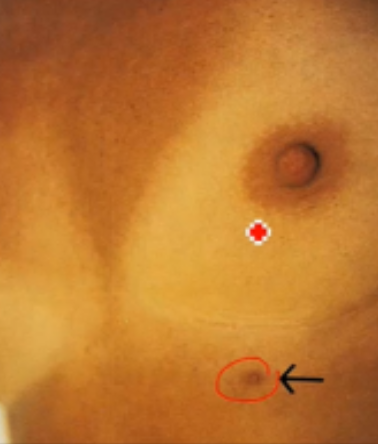
Malignancy
What does a recently retracted nipple that was preciously everted suggest?
Spontaneous Discharge
If any of this is inspected from the nipples, cytologic study and further evaluation must be conducted?
Size
Direction
Dryness
Lesions
Bleeding
Discharge
Retraction
Dimpling
Presence of supernumerary nipples
Note areolas for…
Color
Size
Shape
Texture
Presence of Montgomery tubercles
What should be assessed when inspecting the nipples?
Peau D’Orange
Abnormal finding for the breast
Resulting from edema
Orange peel appearance
Associated with cancer
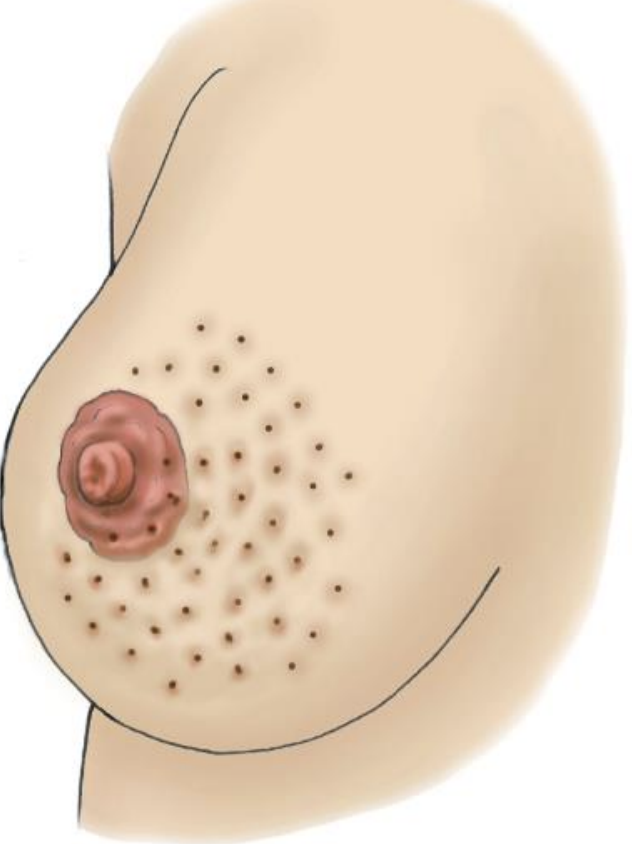
Edema
What does peau d’orange result from?
Cancer
What is peau d’orange associated with?
Paget’s Disease of the Nipple
Abnormal finding for the breast
Redness, mild scaling, and flaking of the nipple
Tingling, itching, increased sensitivity, burning, discharge and pain in the nipple are late signs of this
Can occur in both breasts, but is rare
Approximately half of patients with this have a lump or mass in the breast
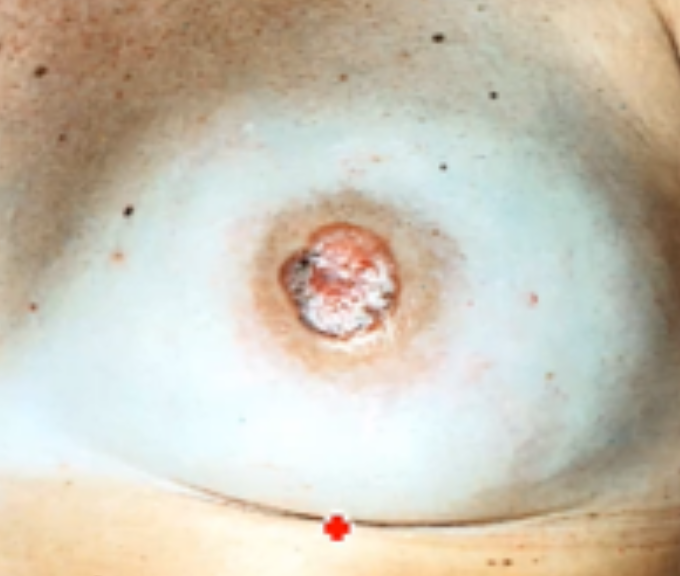
Redness
Mild Scaling
Flaking
Tingling
Itching
Increased sensitivity
Burning
Discharge
Pain
What occurs in the nipple when one has Paget’s Disease of the nipple?
Retracted Nipple
Abnormal finding for the breast
Suggest malignancy
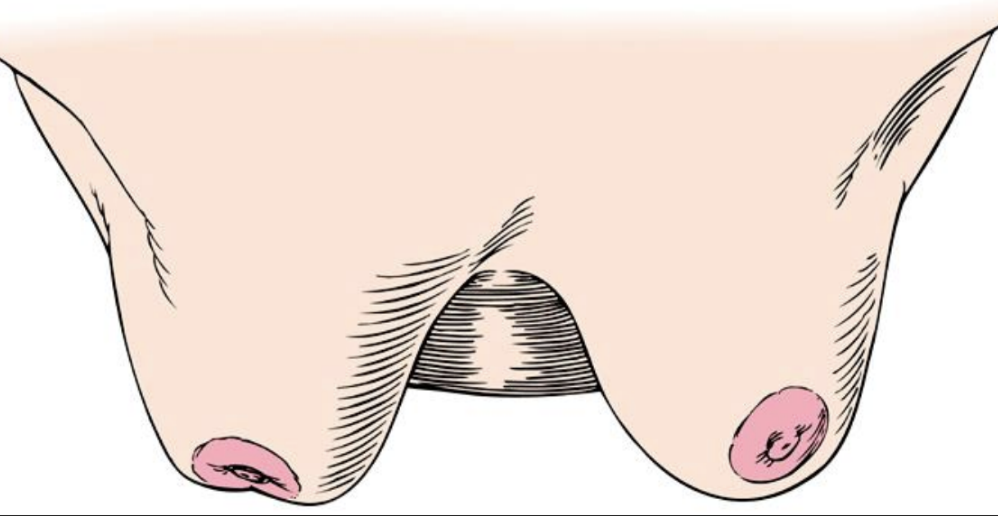
Malignancy
What does a retracted nipple suggest?
Dimpling
Abnormal finding for the breast
Suggest malignancy
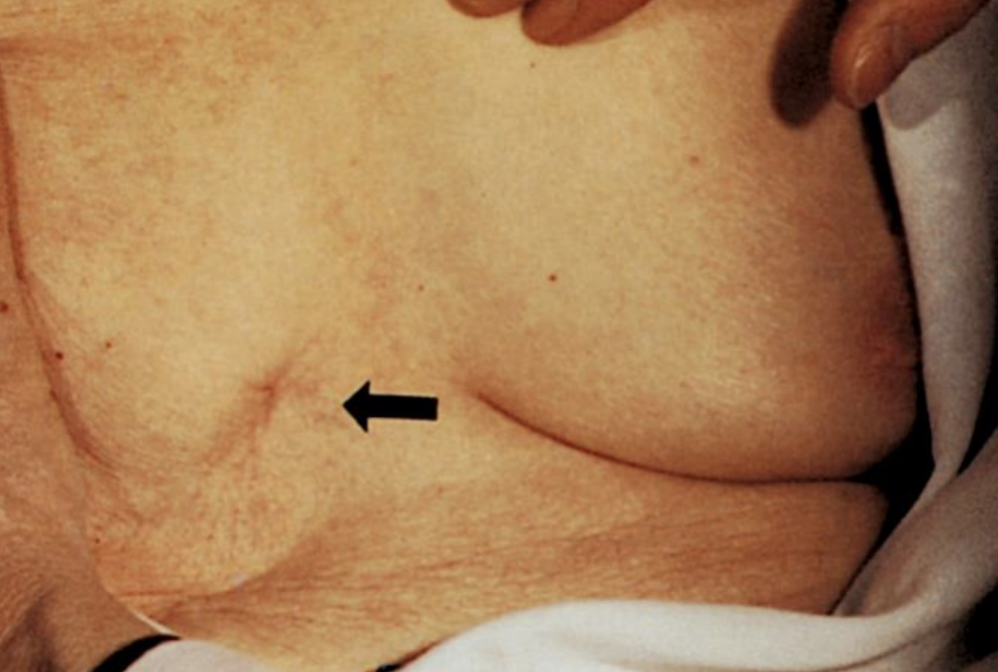
Malignancy
What does dimpling of the breast suggest?
Gynecomastia
Abnormal finding for the breast
Enlargement of breast for male patients
Indicate a hormonal problem
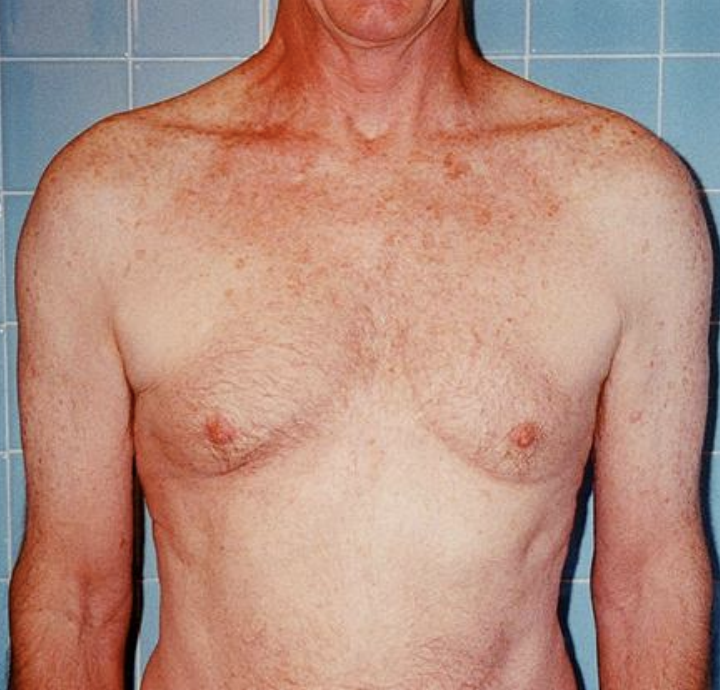
Hormonal Problem
What does gynecomastia indicate?
Arms up
Hands on the hips
Hands together
Lean forward
What are the positions for assessing retraction and dimpling of breast tissue?
Inspect breasts accurately for retraction and dimpling
What is the purpose of making the client perform different maneuvers?
The malignant tumor has fibrous strands attached to the breast tissue and fascia of the muscles.
As the muscle contracts, it draws the breast tissue and skin with it, causing dimpling or retraction.
Why would dimpling and retraction show upon performing the different maneuvers?
No masses should be palpated
What is the normal finding for palpating for masses?
Firm Inframammary Transverse Ridge
Upon palpating for masses, what may normally be palpated at the lower base of the breasts?
Nodular/Glandular Breast Tissue
Upon palpating for masses, what should fibrocystic breast tissue that feels ropy, lumpy, or bumpy in texture be referred to as?
Benign Breast Disease
Upon palpating for masses, what consists of bilateral, multiple, firm, regular, rubbery, mobile nodules with well-demarcated borders?
Menses
Upon palpating for masses, what pain and fullness occurs just before what?
Upper Outer Quadrant
Where are malignant tumors most often found?
Malignant Tumors
What abnormal finding of the breast is usual unilateral, with irregular, poorly delineated borders, as well as hard and non-tender and fixed to underlying tissues?
Fibroadenomas
What are usually 1-5 cm, round or oval, mobile, firm, solid, elastic, nontender, single or multiple benign masses found in one or both breasts?
Milk Cysts
What are sacs filled with milk that may turn into an abscess and occur if breastfeeding or recently given birth?
Mastitis
What are infections that may turn into an abscess and occur if breastfeeding or recently given birth?
Blood that appears as a lump
If one’s breast bruised from an injury, what may occur that goes away in days or weeks or may need to be drained by a health care provider?
Lipoma
What are a collection of fatty tissue that may also appear as a lump?
Intraductal Papilloma
What is a small growth inside a milk duct of the breast, often near the areola but is harmless and occurs in women aged 35-50?
May become erect
Areola may pucker in response to stimulation
Milky discharge during pregnancy or lactation
Some women may normally have a clear discharge
What is the normal finding upon palpating the nipples?
Endocrine Disorders
Medications (like Antihypertensives, Tricyclic Antidepressants, Estrogen)
What is abnormal discharge of the nipples seen in?
Benign intraductal papilloma
Fibrocystic disease
Breast cancer
What may discharge from one breast indicate?
Watery, pink discharge
What type of discharge from the nipple should be referred to a primary care provider?
Embryonic Milk Line
Identify the figure.
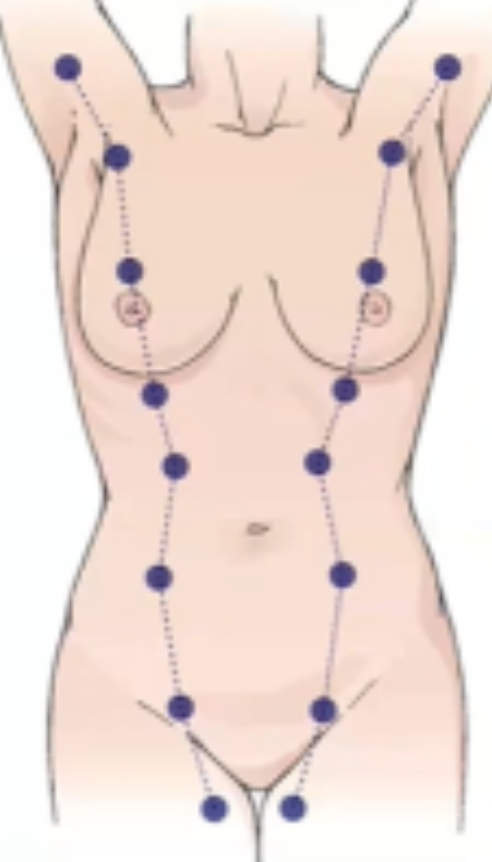
Circular
Wedge
Vertical Drip
What are the patterns for palpating for masses?
Circular
Identify the pattern for breast palpation.

Wedge
Identify the pattern for breast palpation.

Vertical Drip
Identify the pattern for breast palpation.

Bimanual palpation
What type of palpation should be used for large breasts?
Lateral (Brachial)
Identify the Axillary Lymph Node.
(1)
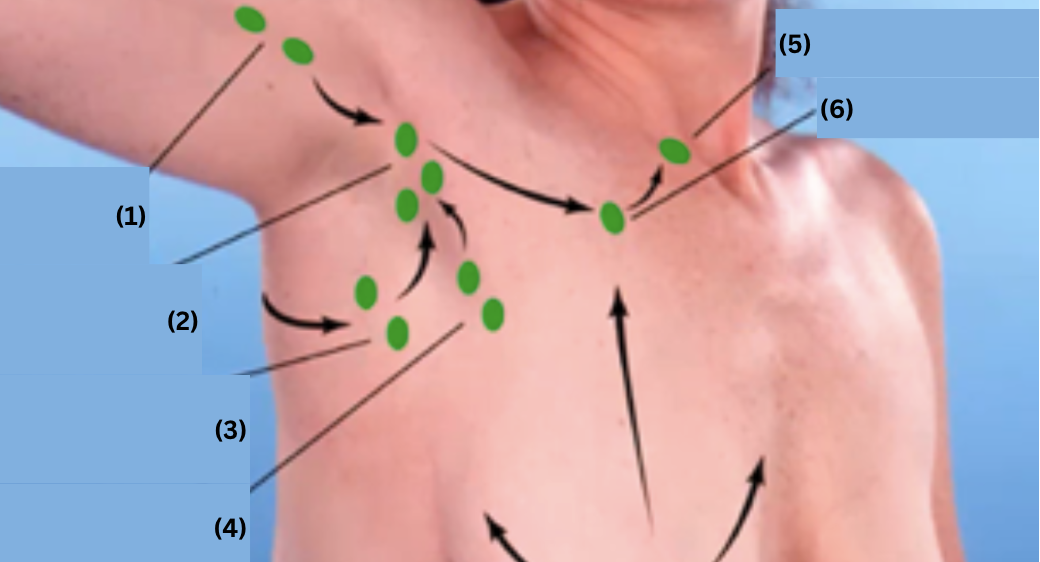
Central (Midaxillary)
Identify the Axillary Lymph Node.
(2)
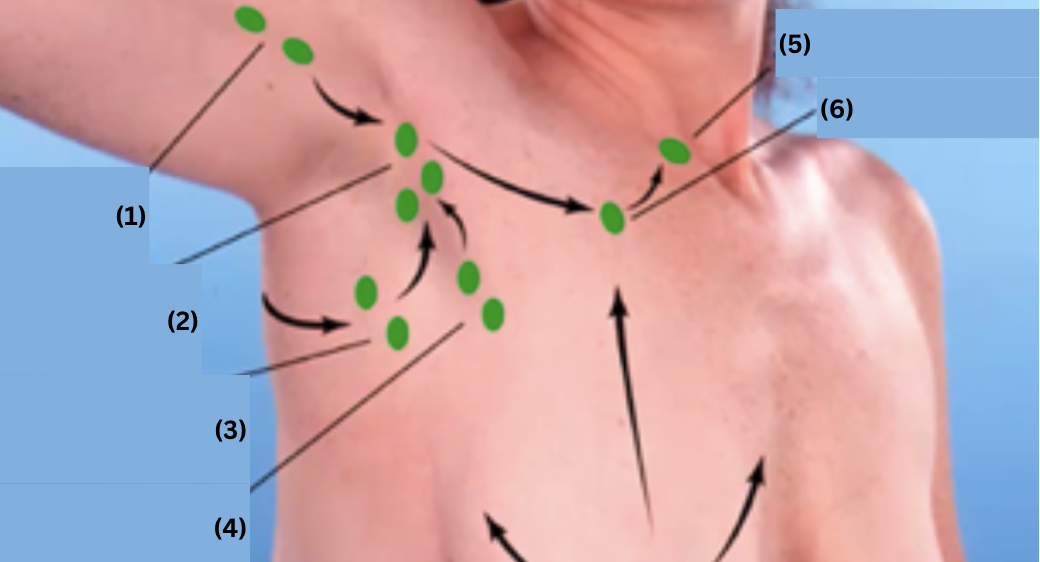
Posterior (Subscapular)
Identify the Axillary Lymph Node.
(3)
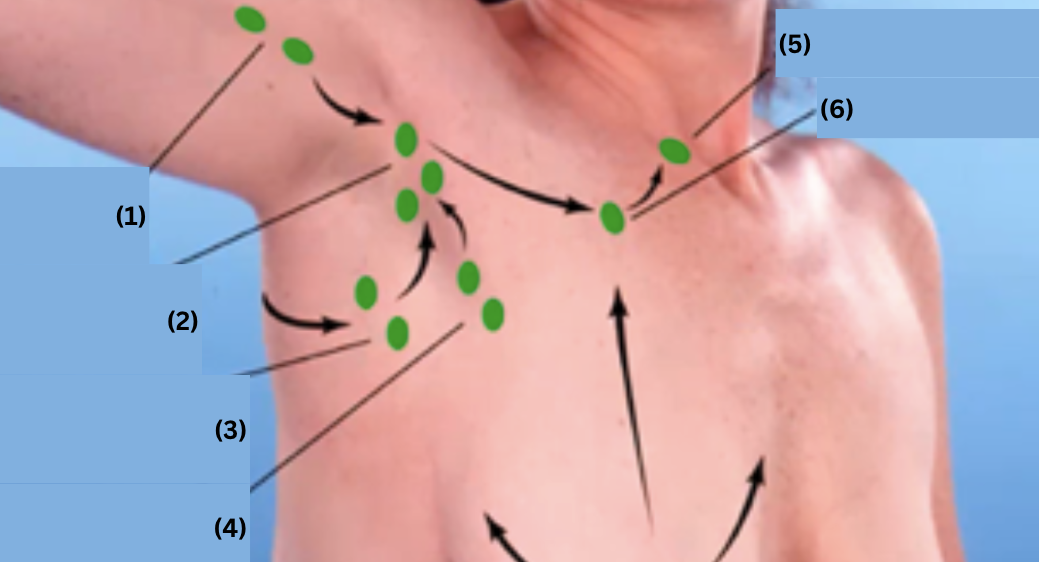
Anterior (Pectoral)
Identify the Axillary Lymph Node.
(4)

Supraclavicular
Identify the Axillary Lymph Node.
(5)

Infraclavicular
Identify the Axillary Lymph Node.
(6)
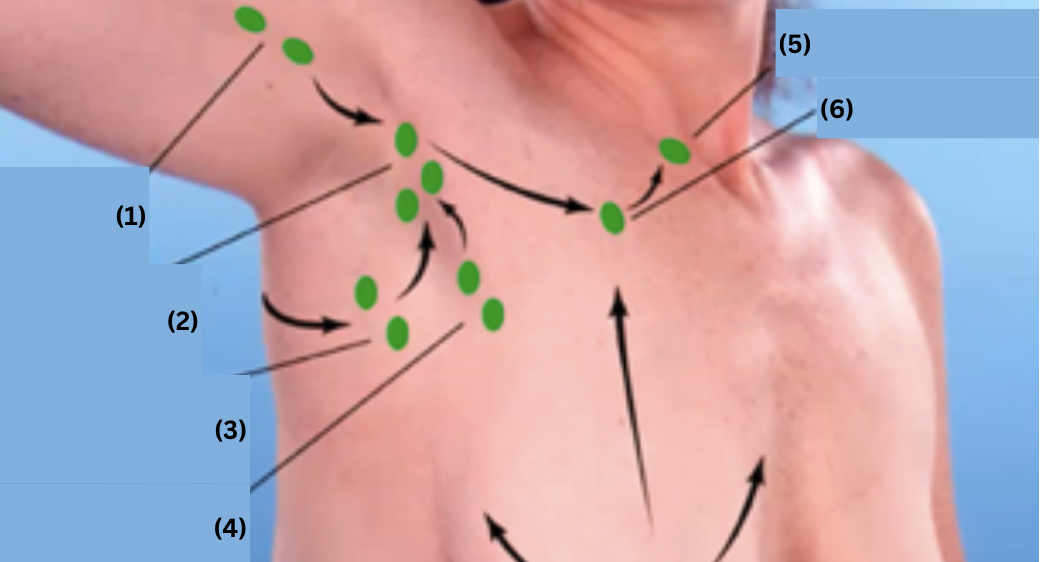
Ask patient to lift arm and palpate
How to palpate the Axillary Lymph Nodes?
Epitrochlear
What lymph node is being palpated?
